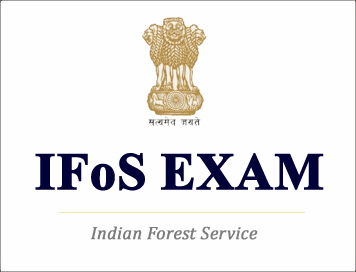(HOT) UPSC Current Affairs 2025 PDF
NEW! The Gist (NOV-2025) | E-BOOKS
UPSC IFOS Exam Syllabus : Chemical Engineering
UPSC IFOS Exam Syllabus : Chemical Engineering
::Chemical Engineering::
Paper-I
Section A
(a) Fluid and Particle Dynamics
Viscosity of fluids. Laminar and turbulent flows. Equation of continuity and Navier-Stokes equition-Bernoulli’s theorem. Flow meters. Fluid drag and pressure drop due to friction, Reynold's Number and friction factor - effect of pipe roughness. Economic pipe diameter. Pumps, water, air/steam jet ejectors, compressors, blowers and fans. Agitation and mixing of liquids. Mixing of solids and pastes. Crushing and Grinding - principles and equipment. Rittinger's and Bond's laws. Filtration and filtration equipment. Fluid-particle mechanics - free and hindered settling. Fluidisation and minimum fluidization velocity, concepts of compressible and incompressible flow. Transport of Solids.
(b) Mass Transfer
Molecular diffusion coefficients, First and second law and diffusion, mass transfer coefficients, film and penetration theories of mass transfer. Distillation, simple distillation, relative volatility, fractional distillation, plate and packed columns for distillation. Calculation of theoretical number of plates. Liquid-liquid equilibria. Extraction - theory and practice; Design of gas-absorption columns. Drying. Humidification, dehumidification. Crystallisation. Design of equipment.
(c) Heat Taransfer
Conduction, thermal conductivity, extended surface heat transfer. Convection - free and forced. Heat transfer coefficients - Nusselt Number. LMTD and effectiveness. NTU methods for the design of Double Pipe and Shell & Tube Heat Exchangers. Analogy between heat and momentum transfer. Boiling and condensation heat transfer. Single and multiple-effect evaporators. Rediation - Stefan-Boltzman Law, emissivity and absorptivity. Calculation of heat load of a furnace. Solar heaters.
Section B
(d) Noval Separation Processes
Equilibrium separation processes - ion-exchange, osmosis, electro-dialysis, reverse osmosis, ultra-filtration and other membrane processes. Molecular distillation. super critical fluid extraction.
(e) Process Equipment Design
Fractors affecting vessel design criteria - Cost considerations. Design of storage vessels-vertical, horizontal spherical, underground tanks for atmospheric and higher pressure. Design of closures flat and eliptical head. Design of supports. Materials of construction-characteristics and selection.
(f) Process Dynamics and Control
Measuring instruments for process variables like level, pressure, flow, temperature pH and concentration with indication in visual/pneumatic/analog/digital signal forms. Control variable, manipulative variable and load variables. Linear control theory-Laplace, transforms. PID controllers. Block diagram represenation transient and frequency response, stability of closed loop system. Advanced control strategies. Computer based process control.
Paper-II
Section A
(a) Material and Energy Balances
Material and energy balance calculations in processes with recycle/bypass/purge. Combustion of solid/liquid/gaseous fuels, stoichiometric relationships and excess air requirements. Adiabatic flame temperature.
(b) Chemical Engineering Thermodynamics
Laws of thermodynamics. PVT relationships for pure components and mixtures. Energy functions and inter-relationships - Maxwell’s relations. Fugacity, activity and chemical potential. Vapour-liquid equilibria, for ideal/non-ideal, single and multi component systems. eriteria for chemical reaction equilibrium, equilibrium constant and equillibrium conversions. Thermodynamic cycles - refrigeration and power.
(c) Chemical Reaction Engineering :
Batch reactors - kinetics of homogeneous reactions and interpretation of kinetic data. Ideal flow reactors - CSTR, plug flow reactors and their perofrmance equations. Temperature effects and run-away reactions. Heterogeneous reactions - catalytic and non-catalytic and gas-solid and gas-liquid reactions. Intrinsic kinetics and global rate concept. Importance of interphase and intraparticle mass transfer on performance. Effectiveness factor. Isothermal and non-isothermal reactors and reactor stability.
Section B
(d) Chemical Technology
Natural organic products - Wood and wood-based chemicals, pulp and paper, Agro industries - sugar, Edible oils extraction (including tree based seeds), Soaps and detergents. Essential oils - Biomass gasification (including biogas). Coal and coal chemical. Petroleium and Natural gas-Petroleum refining (Atomospheric distillation/cracking/reforming) - Petrochemical industries - Polyethylenes (LDPE/HDPE/LLDPE), Polyvinyl Chloride, Polystyrene. Ammonia manufacture. Cement and lime industries. Paints and varnishes. Glass and ceremics. Fermentation - alcohol and antibiotics.
(e) Environmental Engineering and Safety
Ecology and Environment. Sources of pollutants in air and water. Green house effect, ozone layer depletion, acid rain. Micrometeorology and dispersion of pollutants in environment. Measurement techniques of pollutant levels and their control strategies. Solid wastes, their hazards and their disposal techniques. Design and performance analysis of pollution control equipment. Fire and explosion hazards rating - HAZOP and HAZAN. Emergency planning, disaster management. Environmental legislations - water, air environment protection Acts. Forest (Conservation) Act.
(f) Process Engineering Economics :
Fixed and working capital requirement for a process industry and estimation methods. Cost estimation and comparison of alternatives. Net present value by discounted cash flow. Pay back analysis. IRR, Depreciation, taxes and insurance. Break-even point analysis. Project scheduling - PERT and CPM. Profit and loss account, balance sheet and financial statement. Plant location and plant layout including piping.



